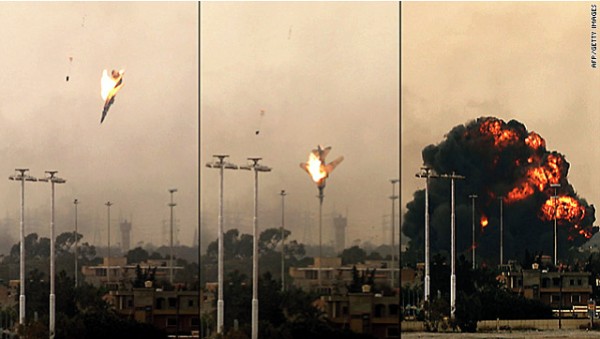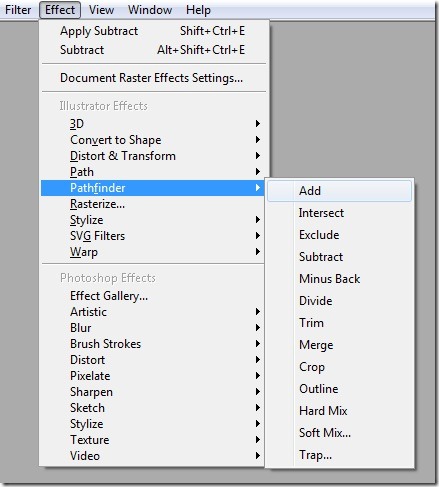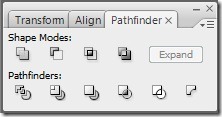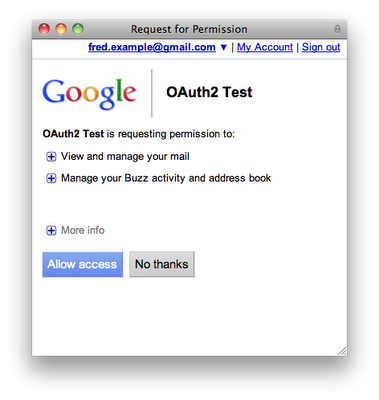Tripoli, Libya (CNN) — French fighter jets deployed over Libya fired at a military vehicle on Saturday, the country’s first strike against Moammar Gadhafi’s military forces who earlier attacked the rebel stronghold of Benghazi.
The French Defense Ministry, which confirmed the strike, said its attack aircraft being used to take out tanks and artillery have deemed Benghazi and the surrounding area an “exclusion zone.”
The French are using surveillance aircraft and two frigates in the operation to protect civilians. The aircraft carrier Charles De Gaulle will soon depart Toulon, France.
“Our air force will oppose any aggression by Colonel Gadhafi against the population of Benghazi,” said French President Nicolas Sarkozy, speaking after an international, top-level meeting in Paris over the Libyan crisis.
France convenes summit on Libya crisis
“As of now, our aircraft are preventing planes from attacking the town,” he said, calling the intervention a “grave decision.”
[googleMap]640|480|4|0|1|Libya|Warzone[/googleMap]
The international show of force is much welcomed by besieged rebel forces who have called for backup to help them stave off a government offensive against their positions in Benghazi and other rebel-held enclaves
An opposition spokesman in Benghazi said Gadhafi forces that assaulted the city earlier Saturday are now positioned outside the town. However, the forces are preparing for more attacks.
Western and Arab allies were coordinating the use of military assets to thwart Gadhafi’s offensive.
Canada will be one of four principal partners helping to enforce the no-fly zone over Libya. Six Canadian CF-18 fighter jets are en route to an Italian base in Sicily and the HMCS Charlottetown will be in position to help with the naval blockade against Libya.
British officials held a crisis meeting Saturday evening.
The United States continued to broadcast the message that it is a member of, and is assisting, the coalition, rather than taking the lead role.
“America has unique capabilities, and we will bring them to bear to help our European and Canadian allies and Arab partners to stop further violence against civilians including through the effective implementation of a no-fly zone,” Secretary of State Hillary Clinton said.
The United States is prepared to “defend its allies flying over Libyan airspace and enforce the no-fly zone,” a U.S. defense official told CNN.
The official said the United States is poised to launch cruise missiles from U.S. Navy warships currently in the Mediterranean Sea, and that these strikes would target Gadhafi’s air defenses.
Sarkozy said Gadhafi still has time to stop its activities. As of Friday, France, Britain, the United States and Arab League nations passed along a warning for Gadhafi to stop his operations immediately.
But “Gadhafi has totally ignored the warning” and “in the last few hours his forces have stepped up their deadly offenses,” Sarkozy said.
The international coalition meeting in Paris — which included Western and Arab partners — focused on how to take on a Libyan government bent on destroying the fledgling opposition movement under the U.N. resolution authorizing force to protect civilians against the Gadhafi government.
Speaking from Brasilia, Brazil, U.S. President Barack Obama said the international coalition was united. “Our consensus was strong and our resolve is clear. The people of Libya must be protected.”
Asked whether the decision to carry out bombing against Libyan forces could begin immediately after Saturday’s session ends, a senior State Department official said: “In terms of when the bombing starts, I’ll leave that for others to lay out at the appropriate time.
“Everybody recognizes the urgency,” he said.
Herman Van Rompuy, president of the European Council, said the European Union is ready to give a “new Libya” economic help and aid in building new institutions.
In Rome, Italian Prime Minister Silvio Berlusconi’s office confirmed to CNN that Berlusconi has proposed the use of the NATO base in southern Italy as a command center for allied action in Libya.
Clinton said despite talk of a cease-fire from Libya, Moammar Gadhafi “continues to defy the world.”
“His attacks on civilians go on,” she told reporters Saturday.
But after Gadhafi forces earlier Saturday assaulted Benghazi, the opposition said the military repositioned itself far outside the city.
Earlier Saturday, incoming artillery rounds landed inside the city, and pro-Gadhafi tanks rolled into the town firing rounds, witnesses said. Plumes of smoke rose in Benghazi as civilians said buildings came under small arms fire. Many fled their homes in fear of a full-blown assault there.
A flaming fighter jet plummeted from the sky, nose-diving to the ground. Khaled el-Sayeh, the opposition military spokesman, said the plane was an old MiG-23 that belonged to the rebels.
But as night fell over Benghazi on Saturday, the city became quiet and calm. While plumes of smoke could be spotted, the pro-Gadhafi tanks seen earlier were not in sight. El-Sayeh told CNN that “tens” have been killed in Benghazi on Saturday and opposition forces found 13 men clad in Libyan military uniforms bound and executed in a building that had been used by pro-Gadhafi forces to launch artillery assaults.
He said Gadhafi forces have withdrawn from the city and that they are now positioned 50 kilometers (31 miles) outside Benghazi on the road east to Ajdabiya. CNN could not independently verify those details.
In western Libya, pro-Gadhafi forces subjected the city of Misrata to heavy shelling, an opposition member said.
In Tripoli, Gadhafi’s supporters took to the streets.
Libyan state TV now showed images of pro-Gadhafi demonstrations, and broadcast pictures of fireworks by pro-Gadhafi demonstrators over the Libyan leader’s military compound in Tripoli. On the streets in Tripoli, people were waving green Libyan flags and singing pro-Gadhafi songs.
Earlier Saturday, Gadhafi issued defiant messages to international powers
“I have all the Libyan people with me and I’m prepared to die. And they are prepared to die for me. Men, women and even children,” Gadhafi said in a letter addressed to Obama and read to reporters by a government spokesman in Tripoli on Saturday.
Fighting has raged in Libya over the last day despite the government’s announcement of an “immediate” cease-fire on Friday.
The declaration — which came hours after the U.N. Security Council resolution authorized the use of force, including a no-fly zone — was seen by rebels as simply a move to buy itself time.
Gadhafi — in a separate letter addressed to Sarkozy, British Prime Minister David Cameron and U.N. Secretary-General Ban Ki-moon — called the U.N. moves “invalid” because the resolution does not permit intervention in the internal affairs of other countries.
“Libya is not yours. Libya is for all Libyans,” said the letter, also read by the spokesman. “You will regret it if you take a step toward intervening in our internal affairs.
“It is not your country. We could never and would never fire one bullet against our people,” the letter said.
Violence has raged in Libya following protests calling for democracy and freedom and demanding an end to Gadhafi’s almost 42-year-long rule. It’s a conflict spurred by anti-government protest and resulting regime violence against civilians — which the U.N. resolution cites as “outrageous” and Sarkozy calls “murderous madness.”
But Gadhafi defended his actions in his note to Obama. He said his opponents are from al Qaeda in the Islamic Maghreb, the group’s North African wing, and asked Obama what he would do if such an armed movement controlled American cities.
“Tell me, how would you behave so I could follow your example?”
As talk emerged in Europe of speedy military action against Gadhafi’s regime, Obama on Friday warned Gadhafi to pull back from several besieged cities or face military consequences.
The civil war has hurt Libya’s oil production, which Shokri Ghanem, the nation’s oil minister, called “our most important source of income and our lifeblood.”
Speaking to reporters in Tripoli on Saturday, he said the abandoment of the work force amid the conflict is the main reason for a drop in production.
He said Libya wants to restore its fields and increase production. He stressed that Libya is honoring all its commitments despite the conflict and asked foreign and local employees to return.





